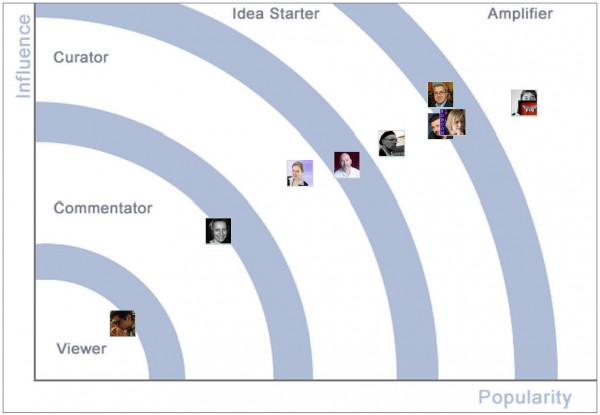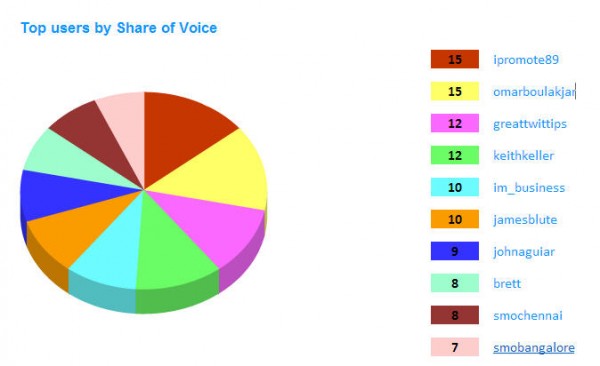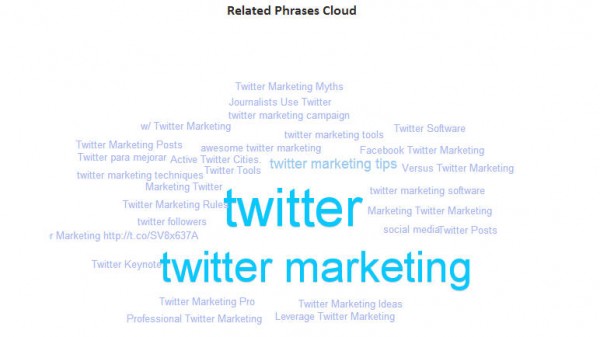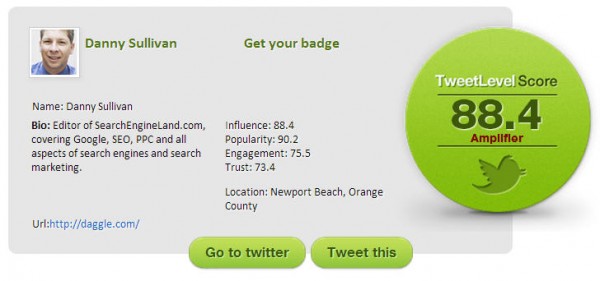TweetLevel: A GPS For Twitter
The dog never ate my homework. Or at least, I never tried to use that as an excuse, which is odd, considering my family actually owned a dog kennel. To this day, the memory of homework sends chills down my spine — I just wasn’t one of those people who dashed off their evening assignments with ease. […]

To this day, the memory of homework sends chills down my spine — I just wasn’t one of those people who dashed off their evening assignments with ease.
If only they had called it research. Research evokes pictures of Mission Impossible dossiers of secret agents, or scientists discovering a breakthrough cure for a killer pandemic.
Research is a key task in social media marketing. We have to listen to and analyze our communities, perhaps even engaging in what some people have called online ethnography, or netnography. We analyze the competition, and stalk research individuals who may be influential in our fields of interest.
There are many software tools and websites available to help with this research, some for free, others at a hefty price. Some are the cat’s pajamas for large brands, but too expensive or complex for mom-and-pops. The options are dizzying and the sheer quantity, daunting! So, when I hear of a new tool, I think, “yeah, yeah – put it on the ‘to-be-evaluated’ pile.” When I hear of one like TweetLevel, made specifically for Twitter, it moves to the top of the pile.
Introducing TweetLevel
TweetLevel is an influence and conversation analysis tool for Twitter created by Jonny Bentwood, head of influencer engagement at Edelman. Of course, to measure influence, we already have Klout, Kred, and PeerIndex, so when I tracked Jonny down, the first question I asked him is why he thought we needed yet another such tool.
In his response, he described how he doesn’t think tracking influence across multiple, very different social media platforms is effective. He added, “…those systems judge online influence by popularity; TweetLevel judges influence by how information flows.”
This line of thinking is pretty much in line with a 2011 Study from Oxford: the spread of information doesn’t just depend on how popular a person is, but how they’re connected to others.
The first thing you’ll probably do in TweetLevel is a search on your own individual Twitter account. TweetLevel is not one of those zippy-fast applications like Google search that provides instantaneous results, but the 30 or so second delay is worth the wait.
TweetLevel returns four measurements, amalgamating them into an overall score. The four measurements are:
- Influence
- Popularity
- Engagement
- Trust
One of the beautiful things about TweetLevel is that the overall algorithm and methodology for creating the TweetLevel score is fairly transparent. The minutiae of what constitutes the particular metrics are not as clear.
Bentwood wrote that the influence score “takes the detail from over 39 metrics and significantly uses regression analysis to find out and reward people who start or curate ideas.” The system uses Topsy as a check and balance to verify that spam accounts aren’t getting through.
TweetLevel places individuals on a landscape of different influence types. If you read Malcolm Gladwell’s The Tipping Point (is there anyone who hasn’t yet?), you’ll recollect the notion that there are different types of influencers. TweetLevel puts them into the following categories:
Idea Starters – In trying to discover people who are influential on a given topic, this might be your most fertile area. These aren’t necessarily the most popular kids in the class, but they are often the people who start an idea, and those popular kids then spread it around.
Amplifiers – I’ve never shared a cup of coffee with Guy Kawasaki, but I’ve seen his tweets. Guy is the classic amplifier, as he shares a tremendous amount of various types of content with a wide audience. He seems to be connected to a lot of Idea Starters.
Curators – Once the Idea Starters and the Amplifiers have done their job, there are often people who keep collating and curating information on a certain topic. They might be analogous to Gladwell’s “mavens.” We look to these individuals for their deep expertise on a topic.
Commentators – These people are not considered very influential, although you look to them as providing a measure of trending opinions around a topic.
Viewers – These individuals are on Twitter, but they’re not participating. In the common Twitter vernacular, these may be the lurkers. If they exert any influence, it’s in their search behavior.
The idea is that there is an eco-system of influence, and that we need to understand those individuals at the different parts of the system. If your job is to help a brand play an influential role in a particular space, it isn’t enough to just target the Guy Kawasakis.
Using The Information
OK, it was fun looking up your own TweetLevel, right? And then comparing it to all of your friends? But we’re marketers, so we’ve got to get some real value from the tool.
In this example, I’ve searched on “Twitter Marketing” as a topic. Like Google searches, you’ll want to use the quotes around the phrase to avoid results that simply have both words. TweetLevel also lets you compare your search with the results for other phrases. In this screenshot, I’ve included “Facebook marketing.”
You can also see the top users by Share of Voice:
And a “Top Shared Web Links:”
Right off the bat, I can see that some of these results are people spamming Twitter with links to questionable material, which means that Topsy might not be having an effect on this part of the results. I do see some good material, too, such as a great post by @jeffbullas. So, in short, as a marketing research tool, TweetLevel is helping me to discover some good material.
Word clouds are pretty ubiquitous across a lot of Twitter tools. It does provide, at a glance, the possibility of finding some related phrases that you might have missed.
TweetLevel also provides a list of the top 100 users by relevance for your topic, extending the first report. If you input your email address, the system will send you a link to the full list that you can also connect to via an RSS feed. I queried a few community managers who agreed that a CSV file would probably be more useful here, so that the names could be dropped into other tools like Commun.it or SocialBro.
We Don’t Need No Stinkin’ Badges
Or maybe we do. If you want to add another badge to your author page, TweetLevel provides the code (iFrame) to add their badge.
A Great Tool For The Marketer’s Quiver
I’ll be including TweetLevel in my ongoing marketing work for clients, primarily as a discovery tool. Often, by working in a tool like this, thinking is stimulated.
Are there topics and keywords I wasn’t thinking of? Can I find new people discussing my topics? And, for now at least, the price is perfect for me: free.
Opinions expressed in this article are those of the guest author and not necessarily MarTech. Staff authors are listed here.
Related stories
New on MarTech





